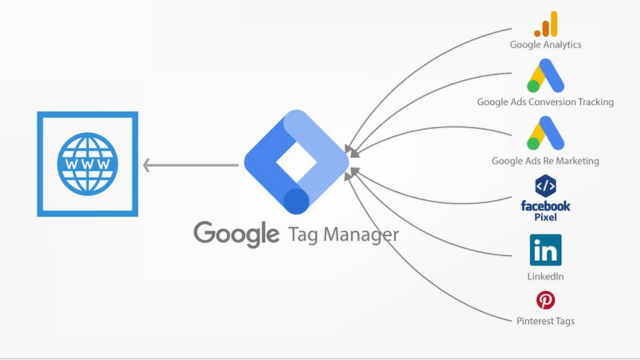Imagine running a lemonade stand, but you have no idea how many people visited, how many bought your lemonade, or whether they liked it. It’d be hard to make improvements without that information, right? Well, that’s exactly the struggle many website owners face—until tools like Google Analytics (GA) come into play.
Google Analytics solves that guesswork. It’s like having a magnifying glass that shows you who visits your website, what they’re doing, and how you can make things better. Whether you’re new to it or want to understand how it works, this article will guide you through the essentials while showing you why it’s such a game-changer for businesses.
The Modern Problem: “Who’s Visiting My Site?”
Running a website without understanding your visitors is like driving blindfolded. Think about it—you might be attracting loads of people daily, but do you know where they’re coming from, what they’re clicking on, or why they leave? Without that information, even the best marketing campaigns can feel like a guessing game.
For businesses, this lack of visibility spells missed opportunities. If you don’t know your audience, you can’t give them what they need. It becomes almost impossible to track the success of your efforts, like ads or promotions, which means you waste time and money refining the wrong things.
This is where Google Analytics changes the game, turning your digital dashboard into a powerful command center full of insights and answers.
Meet Google Analytics: Your Digital Detective
Think of Google Analytics as the Sherlock Holmes of websites. It’s your go-to detective, sleuthing out who your visitors are, what they’re doing, and how your site performs. The best part? It’s free to use, powerful, and works right out of the box.
With Google Analytics, it’s possible to monitor things like visitor demographics, traffic sources, user behavior, and even conversions (such as purchases or sign-ups). Its intuitive dashboards and visual reports make even beginners feel comfortable navigating through their data. Whether you’re trying to boost sales or improve engagement, GA helps you uncover actionable insights to make more informed decisions.
How Does It Work? (The Magic Behind the Scenes)
You might be wondering, “How does Google Analytics work?” It’s a clever system powered by a small bit of JavaScript code, which collects and processes data from your website visitors.
Tracking Code + Cookies
When you set up Google Analytics, it generates a unique tracking code that you add to your website. This code uses browser cookies to follow your visitors’ activities. It tracks a range of data—like how long they stayed, the pages they explored, and even the devices they used. Over time, it compiles all this into detailed reports you can use.
At Work in Real-Time
One of GA’s coolest features is real-time reporting. You can watch as visitors interact with your site in the moment—what pages they’re on, what actions they’re taking, and even where they’re located. It’s like having a live video feed of your digital storefront, offering insights as they happen.
The Main Reports You Need
Google Analytics is packed with reports, but there are a few that are especially handy for getting started.
Audience Report
Who’s visiting your website? The Audience Report tells you all about their demographics, such as age, gender, location, and the devices they use to access your site. This means you can tailor your website content specifically to the people who matter most.
Acquisition Report
Wondering where your traffic comes from? The Acquisition Report breaks it down by channel—organic search, social media, email, and referrals—so you know which strategies bring the most visitors.
Behavior Report
What do visitors do once they land on your site? The Behavior Report shows which pages are most popular, how long users stay on each one, and where they tend to drop off.
Conversion Report
If your goal is to track conversions in Google Analytics, this report is key. It reveals whether visitors completed the actions you wanted, like making a purchase, signing up for a newsletter, or downloading a guide.
Why Businesses Rely on GA
Businesses adore Google Analytics because it’s loaded with benefits that make operations smoother, smarter, and more efficient.
Optimizing Marketing Spend
GA lets you see which efforts drive results (and which ones don’t). For example, if social media brings high traffic but low conversions, you can adjust your focus towards more profitable channels. This kind of insight helps you ensure every dollar works hard.
Improving User Experience
Google Analytics flags potential trouble spots on your site, like pages with high bounce rates. This gives you a chance to make improvements—streamlining navigation, optimizing content, or tweaking layout—so visitors have a more enjoyable experience.
Tracking Campaign Success
Launching a new ad campaign? GA allows you to monitor its performance in real-time, identifying which elements resonate with your audience. This type of tracking is crucial for optimizing ongoing campaigns and ensuring you meet your ROI goals.
Telling a Story with Data
Data can feel overwhelming at first—but Google Analytics transforms these numbers into meaningful stories. With its insights, you can piece together a clear narrative about your website’s challenges and opportunities.
For example, imagine seeing that traffic from Facebook doubled last month, but most of those visitors left after visiting a single page. That’s the story’s “beginning.” The “middle” might explore why they’re bouncing—was the content irrelevant, or maybe the page load time was too long? The “end” focuses on action steps, like refining your ad targeting or optimizing the page itself.
Getting Started with Google Analytics
New to GA? Here’s a simple Google Analytics setup guide to get you on your way.
Set Up Your Account & Property
Sign in to Google Analytics and create an account specific to your business. Set up your property (e.g., website), and GA will generate a unique tracking ID for your site.
Install the Tracking Code
Copy this tracking snippet and paste it into your website’s header. If you’re using a CMS like WordPress or Shopify, plugins are often available to simplify the process.
Define Goals & Events
Decide which actions (or “conversions”) matter for your business—whether it’s downloading a whitepaper, clicking “Contact Us,” or watching a video. Define these as goals in GA to easily measure the success of your campaigns.
Use Analytics Academy
Not sure where to start? Google offers a free Analytics Academy, with beginner-friendly tutorials for mastering the basics and exploring advanced features like those in GA4.
Advanced Tips & Best Practices
Once you’re comfortable with GA basics, you can take things to the next level with these advanced features.
Use GA4’s Event Tracking
With GA4, you can track interactions like clicks, scrolls, or video plays using its powerful event-based tracking system—perfect for detailed campaign insights.
Set Up eCommerce Tracking
If you run an online store, you’ll love GA’s eCommerce tracking. It lets you analyze shopping behavior, from cart additions to completed checkouts, helping you optimize for more sales.
Segment Users
Group users based on shared characteristics—like where they’re from or how they found your site—to uncover new marketing opportunities or problem areas.
Connect with Google Ads & Search Console
Integrating GA with Google Ads or Search Console creates a more complete picture of your marketing funnel, combining paid, organic, and on-site data into one powerful dashboard.
Use Custom Dashboards & Reports
Save time by building dashboards tailored to your most crucial metrics. For instance, create one for weekly traffic trends, another for conversion rates, and a third for campaign tracking.
Stay Updated: GA’s Future
Google Analytics is always evolving—most recently with GA4, which includes AI-driven insights, a more user-friendly design, and advanced privacy tools to help businesses adapt to changing regulations. Staying up-to-date ensures you’re getting the most out of this versatile tool.
Your Google Analytics Checklist
Before getting started, run through this quick checklist to cover all your bases:
- Set up your Google Analytics account & tracking code
- Define clear goals and events
- Exclude internal traffic using filters
- Create custom dashboards for key metrics
- Link GA to Google Ads & Search Console
- Schedule regular reviews to act on insights
Engaging with Google Analytics doesn’t just improve your website—it transforms your entire business strategy, helping you make smarter choices and connect more meaningfully with your audience.
What’s your favorite Google Analytics feature? Share your experiences in the comments below! And if you’re ready to learn more about tools that can supercharge your marketing efforts, subscribe to our newsletter for weekly insights, tips, and tutorials.



